The Story of Culture and Arts
- Image resource of Korean history
- Documents from History TextBooks
- Culture & Art Stories from Korean History
- Culture & Art Stories from Korean History - Korean
- National Institute of Korean History
- History net
- About the site
- Introduce
-
Numerous topics related to Korean culture and art are mentioned in middle and high school national history textbooks, but most of them are briefly described by era, making it difficult to understand their concepts, transition processes, and characteristics.
<Culture & Art Stories from Korean History> produces and provides video materials based on expert commentary on the flow, change process, characteristics and characteristics of each major topic in the field of culture and art in Korean history.

Scenario
A building of solemn beauty, A cultural heritage site for all mankind, and a spiritual heritage site imbued with profound Confucian principles, the Jongmyo.
Let’s listen to the story of the Jongmyo, a shrine filled with intangible and tangible treasures.
What is the Foremost Symbol of Joseon Architecture?
The Jongmyo shrine is a large shrine where the ancestral rites of the Joseon royal family are performed. Koreans in the past believed that when we die, our spirit rises to the heavens, while our body is returned to the earth. A shrine is the resting place for souls, and the royal Jongmyo shrine is the place where the spirit tablets of Joseon kings and queens are enshrined.
The institution of a royal shrine, which dates back to the ancient Zhou Dynasty in China, entered the Korean Peninsula during the Goryeo period.
Jongmyo sits above all as the foundation of our state. The building of a new royal shrine (Jongmyo) began last year. Have court officials discuss the order in which the ancestral tablets shall be placed and the procedures of the ceremony, and once these have been decided, report it. - Goryeosa (History of Goryeo), Year 11 of King Seongjong (992)
With the opening of the Joseon Dynasty, the Goryeo-era Jongmyo in Gaegyeong (Kaesong) was demolished, and with the transfer of the capital from Gaegyeong to Hanyang (Seoul), the “Joseon Jongmyo” that stands in Seoul to this day was built.
Upon receiving the mandate of heaven, the king established the state and built the Jongmyo to worship the ancestors. This is to give back to his roots and honor his ancestors, a duty of utmost import. - Joseon Gyeonggukjeon (Joseon Administrative Code)
Upon establishing the Joseon state, its rulers began building the Jongmyo and Sajik shrines. As a state established on Confucian principles, these held important symbolism. The location for Jongmyo was determined according to Confucian principles. Jongmyo is situated to the palace’s east, while the Sajik shrine is situated to its west. Thus when facing south from the royal palace, they are placed on the left and right sides of the palace.
As you enter the oedaemun, or large outer gates, you are met by a long stone pathway. As you walk down this pathway that is separated into three parts, the main hall of the Jongmyo complex, the Jeongjeon, soon appears.
A long wooden building exceeding 100 meters.
The Jeongjeon is divided into 19 kan, or sections. Starting from the west, the spirit tablets of 19 Joseon kings and 30 of their wives are arranged in order of their rule.
“Since Jongmyo was a structure built for holding rituals, its solemn and clean appearance is its greatest architectural feature. The decorative features of the building do not include colorful paintwork or elaborate bracket-structured roofs. Instead, a Ikgong structure was employed. You can also see that only the colors red and green were used, going in a completely different direction from the royal palaces.” Cho Jaemo, Professor / Kyungpook National University, School of Architecture
Near the Jeongjeon is the Gongsindang shrine, dedicated to meritorious government officials who contributed much to the country, and the Cheolsadang shrine, which houses the seven gods who control human lives and life spans. And beside the Jeongjeon, we have the Yeongnyeongjeon.
There is also the Hyangdaecheong, which houses the supplies and incense needed for a ceremony, the Jeonsacheong, where ceremonial food is prepared, and the Jaegung, where the king bathes and prepares for the ceremony. There’s the panwi, where the king and prince stand and await the commencement of the ceremony and the Seongsaengwi, where the sacrificial offering is made! Every spot in the Jongmyo bears the mark of the ancestral rites ceremony.
“During the Joseon period, they often used the phrase ‘hyeolsik.’ This means “a ceremony in which an animal is sacrificed.” Hyeolsik calls to mind the image of the transcendental god to whom sacrificed animals were offered. State-level ceremonies in particular had to be hyeolsik ceremonies in which the sacrificial animal was killed and then offered.” Lee Wook, Researcher / Academy of Korean Studies
The significance of Jongmyo becomes apparent when the ceremonies are performed. In the Joseon period, ceremonies were held at the beginning of every season and at Nabil, about a month after the winter solstice in the twelfth month.
With these five ceremonies serving as the base, rites were also performed several other times in a year, such as when good or bad things happened to the country and for seasonal harvests with offerings of freshly harvested fruit and seasonal dishes. Today, the state-level ceremony called the Jongmyo Daeje is held each May.
A place that continues its 600-year-old history! Isn’t this what makes the Jongmyo so fascinating?
Why is the Jongmyo’s Jeongjeon 100 meters long?
Jeongjeon, the 100-meter-long building of the Jongmyo.
This building enshrines the spirit tablets of 19 of the 27 Joseon kings. Then where are the spirit tablets for the remaining kings?
“This is the Yeongnyeongjeon. The Yeongnyeongjeon was made as a secondary shrine to the Jeongjeon. At first glance, it appears fairly similar to the Jeongjeon. They’re both long buildings. The most distinctive feature of Yeongnyeongjeon is its raised 4-kan portion in the center.” Cho Jaemo, Professor / Kyungpook National University, School of Architecture
The Yeongnyeongjeon is a separate shrine housing the spirit tablets that couldn’t be placed in the Jeongjeon. In the 4-kan under the center raised-roof hall, four generations of King Taejo’s ancestors are enshrined. In the 6-kan wings on either side are housed the spirit tablets of the kings who didn’t make it into the Jeongjeon.
Then which kings are enshrined in the Jeonjeon and which are in the Yeongnyeongjeon? When the Joseon Jongmyo was first built, a one-kan structure on either side called hyeopsil were added to the 5-kan spirit chambers to make the 7-kan Jeongjeon.
The ancestral temple of the son of Heaven embraced seven fanes; The temple of the prince of a state embraced five such fanes. - Book of Rites
Based on the Confucian principle, only five kan were allowed to be constructed.
But an issue would arise during the time of King Sejong. Three years after the death of King Jeongjong, there were already five spirit tablets in the Jeongjeon, and one had to be moved. The problem? Whose spirit tablet to remove, and where to move it?
Ancestors who performed good deeds must be recognized as monarchs whose spirit tablets may never be moved. - Joseon Gyeonggukjeon (Joseon Administrative Code)
Following numerous discussions, it was decided that King Taejo, the founder of the Joseon state, would be forever enshrined at the Jeongjeon. Those monarchs beyond four generations had their spirit tablets enshrined at the newly constructed Yeongnyeongjeon.
However, the most revered rulers of later generations were allowed to remain in Jeongjeon. As the number of Joseon kings who were designated as “great” grew due to political reasons and problems over the royal succession, the original 7-kan Jeongjeon was extended to 11 kan, then 15 kan, and finally 19 kan, the version we see today.
“The Jongmyo is where the ancestral rites ceremony for past kings is held. This means that Jongmyo was to embody the image of the king who ruled his country with the Confucian ethics of “benevolence”(Ren/仁), “righteousness”(Yi/義), and “filial-piety”(Xiao/孝) We can then understand the Confucian philosophy, or rather the spirit of Joseon, by looking at Jongmyo.” Lee Wook, Researcher / Academy of Korean Studies
This is not only a place where majesty and beauty are seen in controlled simplicity, but a place where every square inch is infused with deep meaning!
Although it may look like just a quiet and empty place, Jongmyo is a place filled with interesting stories of the Joseon dynasty.
[Epilogue]
Must-Know Facts on Culture and Art in Korean History
1. Jongmyo and Sajik Shrine are two structures that symbolize Joseon Confucian principles.
2. Jongmyo is a shrine that houses the spirit tablets of Joseon’s kings and queens.
3. The spirit tablets of Joseon kings are enshrined in the Jeongjeon and the adjacent Yeongnyeongjeon, a secondary shrine.
Architecture
12 films-
 Fortresses - walled towns in Korea09:15
Fortresses - walled towns in Korea09:15 -
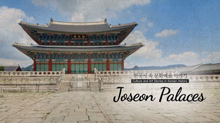 Joseon Palaces08:46
Joseon Palaces08:46 -
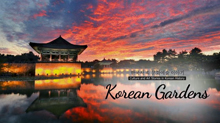 Korean Gardens08:34
Korean Gardens08:34 -
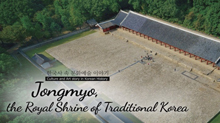 Jongmyo, the Royal Shrine of Traditional Korea09:05
Jongmyo, the Royal Shrine of Traditional Korea09:05 -
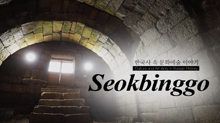 Seokbinggo, or Stone Ice Storage08:18
Seokbinggo, or Stone Ice Storage08:18 -
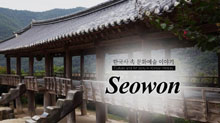 Seowon, a Neo-Confucian Academy08:22
Seowon, a Neo-Confucian Academy08:22 -
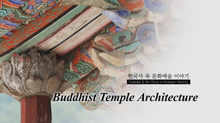 Buddhist Temple Architecture08:28
Buddhist Temple Architecture08:28 -
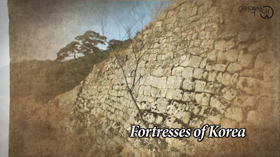 Fortresses of Korea09:12
Fortresses of Korea09:12 -
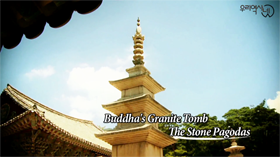 Stone Pagodas07:13
Stone Pagodas07:13 -
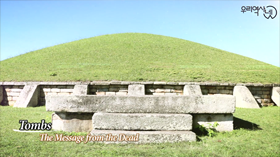 Tombs09:36
Tombs09:36 -
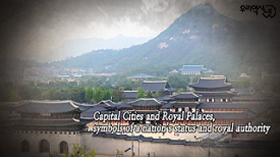 Capital Cities and Royal Palaces08:55
Capital Cities and Royal Palaces08:55 -
 Roof Tiles07:48
Roof Tiles07:48

